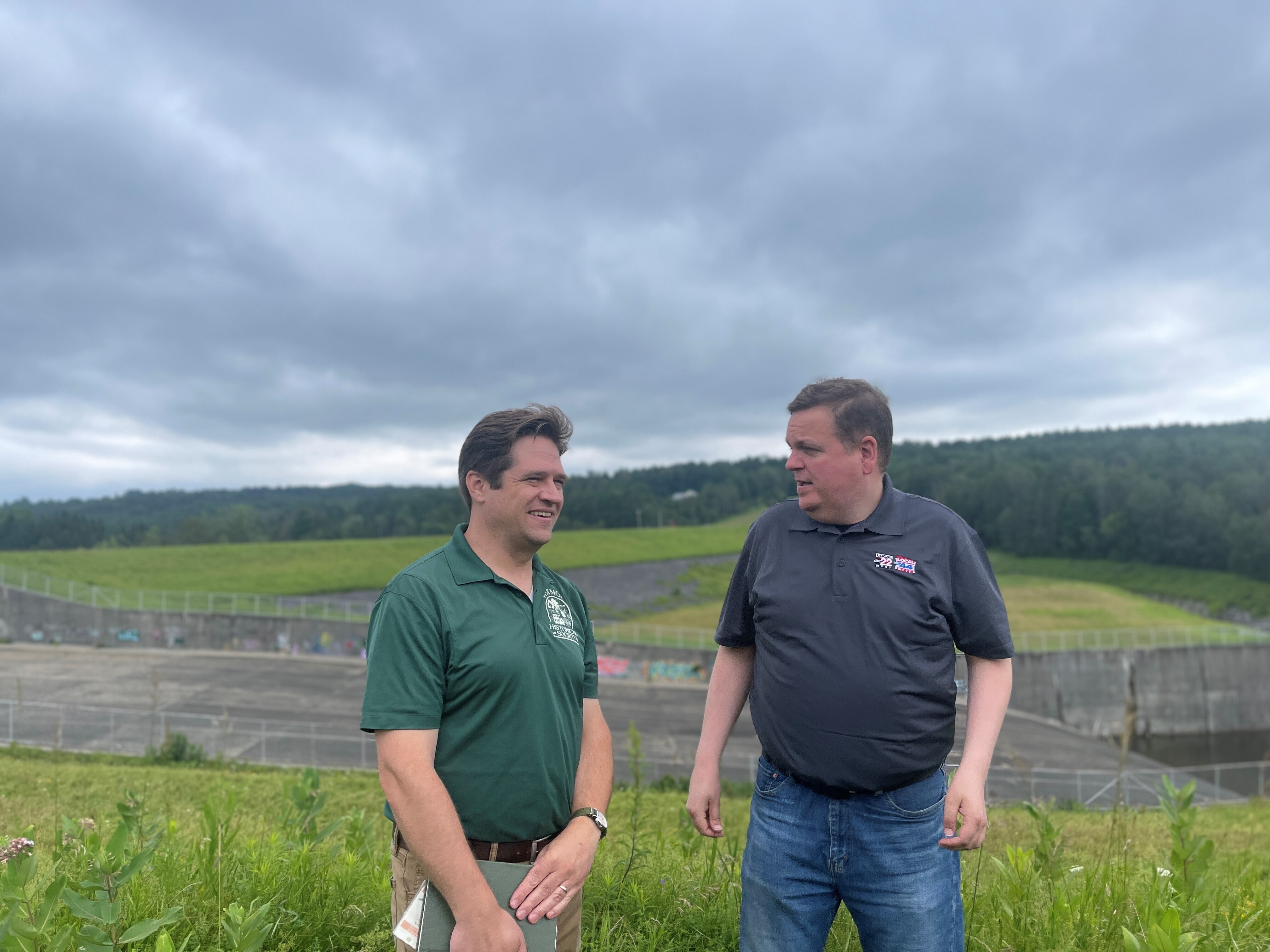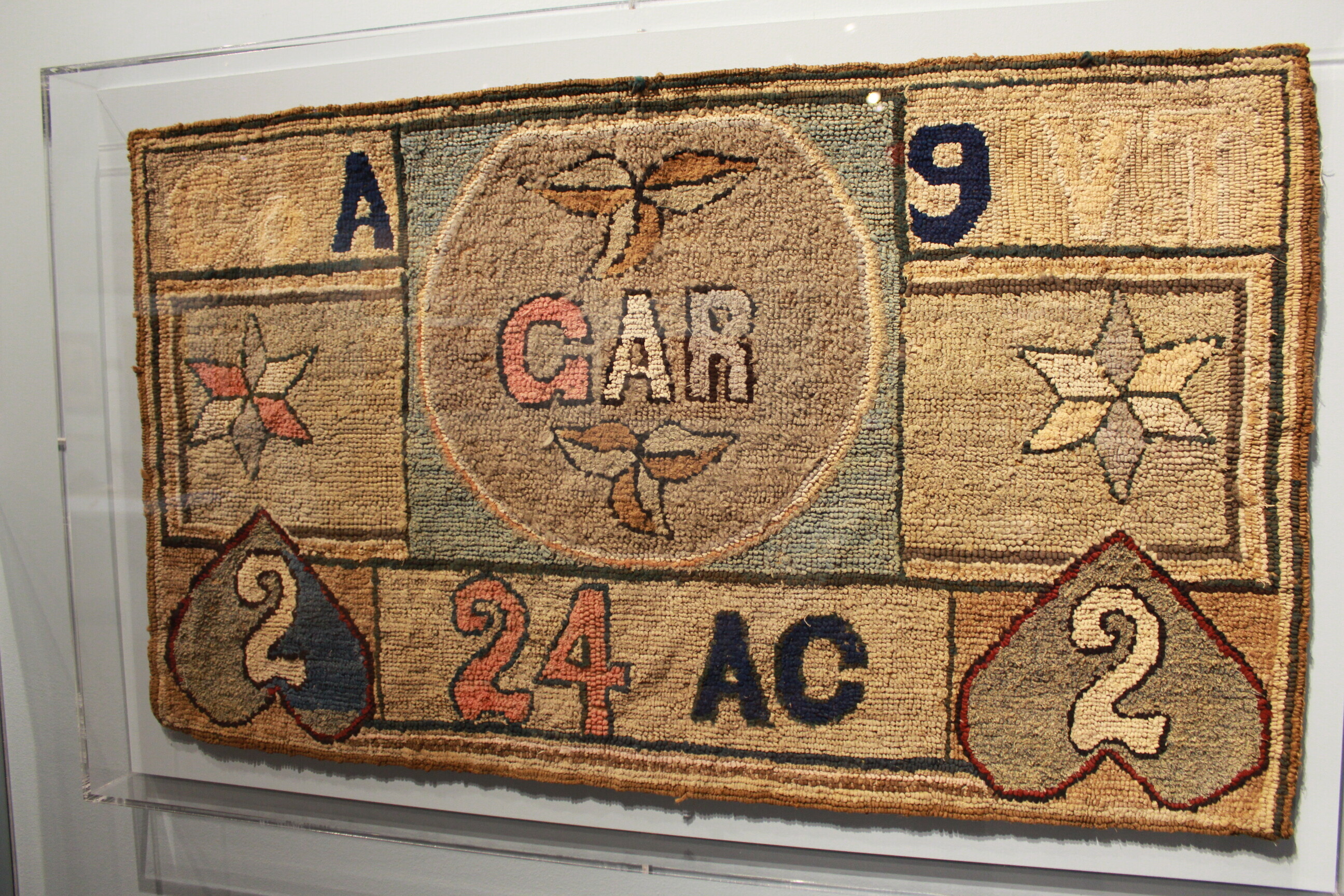Exit interview with This Place In History's Mike Hoey

If you've watched ABC 22 & Fox 44 or subscribe to our YouTube channel, you've probably seen our series This Place in History, where we travel around the state and explore the historic stories across Vermont. Since 2022, Anchor Mike Hoey has co-hosted the program, and he's recently announced that he's leaving the station for other opportunities. We'll miss working with him, and before he left, we wanted to check in to get his thoughts about his time on the program and what he enjoyed the most about it.
You’ve been one of the co-hosts of This Place in History since 2022: how did you come to join the program?
Some things in life are as simple as "ask and ye shall receive." When I started working for ABC 22 & Fox 44 in January 2018, This Place in History immediately stood out to me as a cool slice of life each week unlike anything I'd seen on the air in any of the other places I'd ever worked. I resolved that if I ever had the chance to do it regularly, I'd jump at it.
That opportunity came in early 2022 when the reporter who was working on it left our newsroom for a new job out of state. I asked my then-boss if I could take up the mantle. He replied, "I was hoping you'd say that!" The first shoot date I went on was maybe a week or two later.
How did you become interested in history in the first place?
It's difficult to say. Since I was old enough to read at all, one of my absolute favorite things in the world to do in my spare time has always been to curl up with a book.
If I had to point to any singular thing, though, it's probably the original airing on PBS of Ken Burns' The Civil War in late 1990. I was in seventh grade, and that documentary awakened me to the diversity and richness of the stories that can be told via history. It helped encourage me to take a history minor in college along with my journalism major.
Part of a TPIH episode is traveling out to a location with VHS staff (usually VHS Executive Director Steve Perkins) and talking about a particular location and the stories behind it. What types of work went on behind the scenes before an episode went to air?
Steve works very hard to determine where we go, what subjects we cover and when we go to each place. It was up to me to round up a videographer from within our newsroom to go out with Steve and me at Steve's appointed times. If no one was available, I would have to shoot the video and the interviews myself. This ended up happening a few times, but not often.
Depending on both the subjects and my own availability, I was sometimes able to do a fair bit of reading up on my own in advance. Given that I've worked nights for years and we've often had to leave at 9:00AM-ish to go on This Place in History shoots, this wasn't as often as I'd have liked. Pro tip: if you watch the installments I did with Steve, you can probably discern with a fair degree of accuracy which ones I was able to do this for and which ones I wasn't.
Most of the work I had to put in was after the fact — editing the interviews, video and still images we gathered into a piece with a reasonably breezy narrative flow lasting somewhere between three and four minutes. Some pieces were far more challenging to edit together than others, but all have been a pleasure to get onto the air each Thursday.
Once each piece aired, I needed to post it on our newsroom's website where they'd be automatically disseminated on social media. I would then need to send a copy of each piece to VHS so that it would be uploaded to your website.
Are there any episodes that stand out for you?
The one I look back upon the most often is the one about why there are so many streets, in so many Vermont municipalities, named Poor Farm Road. Until Steve and I worked on that episode, I probably could have intuited what a poor farm was. However, as a native of Massachusetts, I absolutely couldn't have told you how pervasive they once were in Vermont. I couldn't have told you why they existed or just how recently some of them were still operating.
Looking back on those two years, what are some of the things that you learned about Vermont while doing the show?
For starters, why are so many places on Vermont's landscape named after places in Connecticut? Certainly, I could have guessed that many of the people who incorporated various Vermont municipalities had roots in the Nutmeg State — and that guess would have been correct. I didn't know until this series, though, that the Vermont Republic was originally founded as New Connecticut.
You could also look to a bank robbery in the Northeast Kingdom. I knew bank robberies became classified as federal offenses during the Depression. However, I had never heard of the robbery of the Caledonia National Bank in June 1934, never mind that it was the first bank robbery to ever be investigated by the FBI.
What’s next for you?
My partner and I absolutely love Vermont, and we're not leaving. That much is clear. What exactly I'm doing next isn't clear, but I do know it won't be in local television or in any other news media role. Working on This Place in History for the last two and a half years has been an absolute joy, and I'll miss it terribly!
